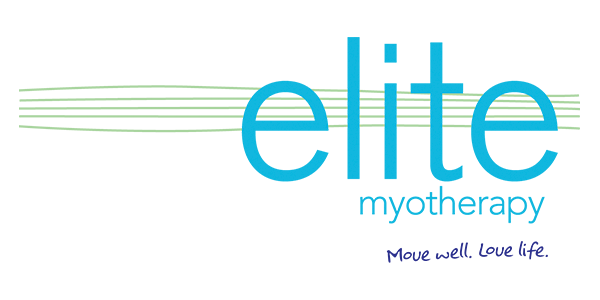Trigger points, commonly known as “muscle knots,” are areas of tight, sensitive muscle tissue that can cause significant discomfort and pain. These points often feel like a small bump or a hard lump in the muscle and can lead to referred pain, where the discomfort is felt in other areas of the body away from the actual trigger point.
Trigger points can develop due to a variety of factors, including overuse, stress, poor posture, or injury. Left untreated, they can lead to chronic pain, restricted movement, and a decrease in overall physical performance. Understanding what trigger points are and how Myotherapy can help treat them is crucial for effective pain relief and improved quality of life.
What Are Trigger Points?
A trigger point is essentially a hyper-irritable spot within a muscle. When muscles are stressed, overworked, or injured, they can develop tight bands of muscle fibres that restrict blood flow and oxygen to the area. This lack of circulation causes the muscle fibres to contract tightly, creating a knot.
While trigger points are painful on their own, what makes them particularly problematic is their ability to cause referred pain. This means that pain from a trigger point in one area of the body can radiate to another part. For example, a trigger point in the upper back may lead to pain in the neck or even cause headaches. This can make it difficult to pinpoint the actual source of the pain without professional help.
Common Symptoms of Trigger Points
Trigger points can manifest in several ways, often causing a range of symptoms. These include:
- Localised pain or tenderness at the site of the trigger point
- Referred pain in other areas of the body, often making the source of the pain hard to identify
- Tightness or stiffness in the affected muscle group
- Limited range of motion or difficulty moving comfortably
- A feeling of weakness or fatigue in the muscle, even though no injury is present
These symptoms can affect your daily activities, making it difficult to move freely, exercise, or even relax without discomfort.
How Myotherapists Treat Trigger Points
Myotherapy is highly effective for treating trigger points. Myotherapists are trained to identify and address these troublesome areas through various hands-on techniques and personalised treatment plans.
Deep Tissue Massage
One of the primary techniques used in Myotherapy for trigger points is deep tissue massage. This involves applying firm pressure to the trigger point to help release muscle tension, improve blood flow, and encourage the muscle to relax. By breaking down the tight bands of muscle fibres, deep tissue massage helps restore normal muscle function and alleviate pain.
Myofascial Release
Myofascial release is another technique used by Myotherapists to treat trigger points. It targets the connective tissue (fascia) that surrounds the muscles. When fascia becomes tight, it can contribute to the development of trigger points. Myofascial release involves applying gentle, sustained pressure to these tight areas to release tension and improve mobility.
Trigger Point Therapy
Trigger point therapy specifically targets the sensitive spots in muscles. Myotherapists use their hands, elbows, or tools to apply direct pressure to the trigger point, often holding the pressure for a few seconds or until the muscle starts to release. This technique is highly effective for reducing referred pain and restoring normal muscle function.
Dry Needling
Dry needling is another technique commonly used to treat trigger points. This involves the insertion of fine, sterile needles into the muscle knots to help release the tension and improve blood flow. The twitch response created by the needle helps to break the cycle of pain and tightness, promoting relaxation in the muscle.
Stretching and Strengthening Exercises
In addition to hands-on treatments, Myotherapists often prescribe stretching and strengthening exercises to help prevent trigger points from recurring. These exercises target weak or tight muscles and help restore balance in the body. By improving muscle flexibility and strength, you can reduce the likelihood of developing new trigger points.
Benefits of Treating Trigger Points
Addressing trigger points through Myotherapy offers several key benefits:
Pain Relief: The primary benefit is the immediate relief from pain and discomfort that trigger points can cause, especially when they lead to referred pain in other areas.
Improved Mobility: Treating trigger points helps release muscle tension, improving your range of motion and making it easier to move freely.
Better Posture: Trigger points can disrupt your posture, causing imbalances in the body. By releasing these points, you can improve your overall posture and alignment.
Enhanced Muscle Function: Once trigger points are treated, muscles can return to their normal state, improving strength and function.
Long-Term Relief: Regular Myotherapy treatments can help prevent the recurrence of trigger points, offering lasting relief from chronic muscle tightness and pain.
Self-Care Tips for Managing Trigger Points
While professional treatment is the most effective way to manage trigger points, there are some self-care techniques you can use to manage discomfort between Myotherapy sessions:
- Stay Hydrated: Dehydration can exacerbate muscle tightness, so make sure you’re drinking enough water throughout the day
- Use a Spiky Ball or Foam Roller: These tools can help massage tight muscles and release tension in trigger points
- Stretch Regularly: Gentle stretching can help prevent muscles from becoming too tight and developing trigger points
- Pay Attention to Posture: Be mindful of your posture, especially if you sit for long periods or perform repetitive motions, which can lead to trigger point development
Trigger points are a common cause of pain, tension, and restricted movement, but they don’t have to disrupt your life. Through Myotherapy, you can address these muscle knots, relieve referred pain, and restore normal muscle function. By incorporating treatments like deep tissue massage, trigger point therapy, and dry needling, Myotherapists provide a holistic approach to managing and preventing trigger points, helping you move freely and live pain-free.
If you’re dealing with muscle knots or unexplained pain, Myotherapy can help identify and treat the root cause, giving you the relief you need and helping you regain control over your body.







